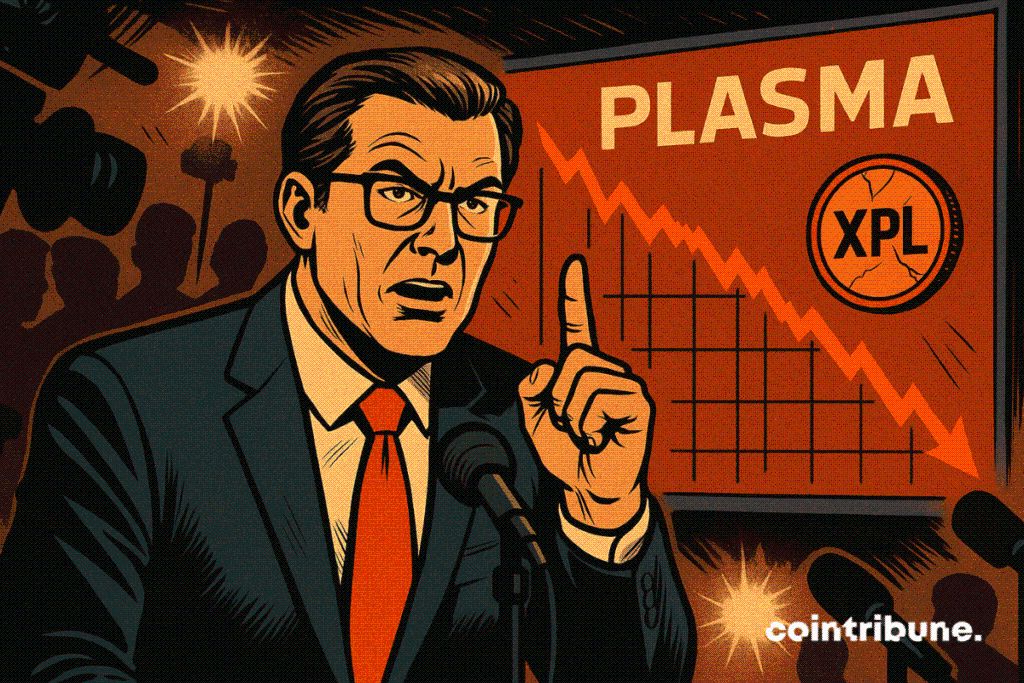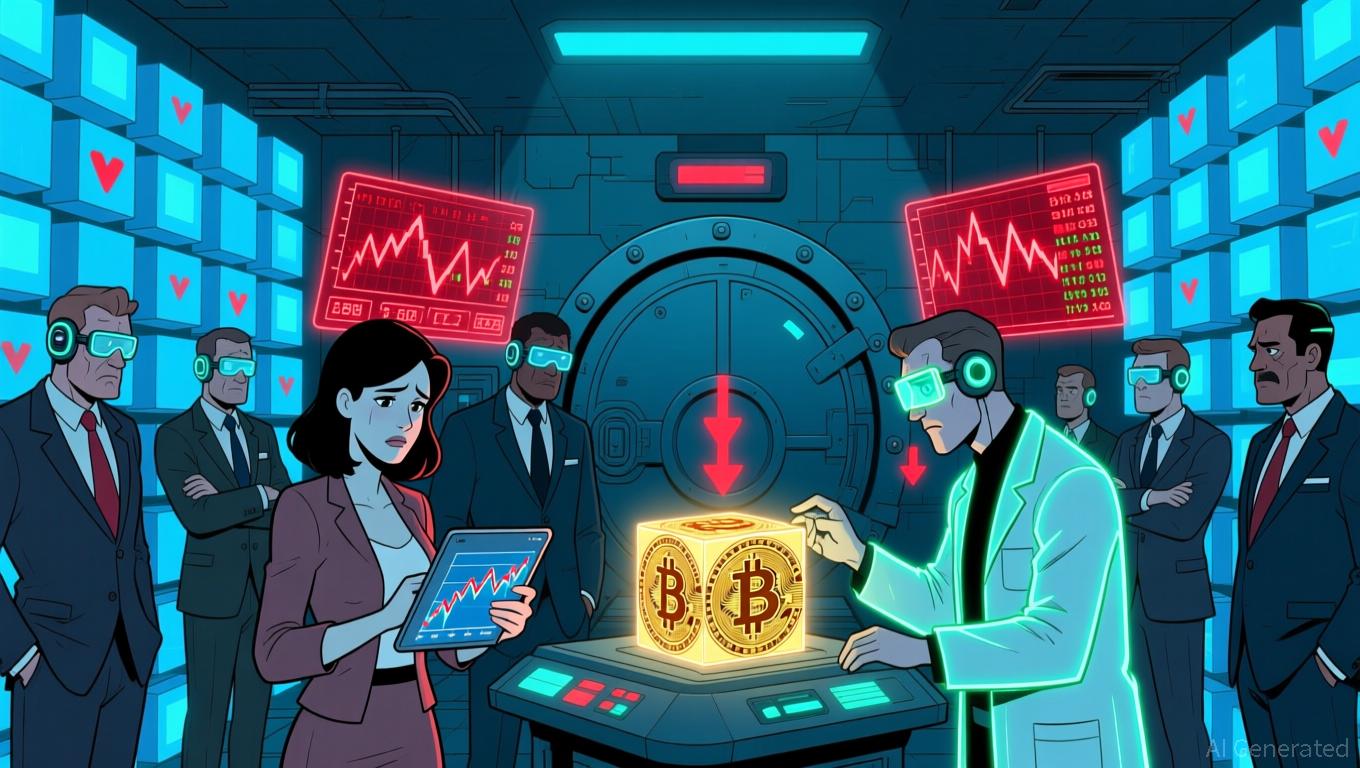Crypto: Plasma CEO Refutes Rumors Following XPL Token Drop
The XPL token from Plasma is going through a turbulent period. After the XPL drop and the rumors, CEO Paul Faecks publicly defends his project.

In brief
- The XPL token from Plasma suffered a sharp drop in the markets.
- Facing rumors, the CEO publicly denied any manipulation or imminent bankruptcy.
- The crypto community remains skeptical despite official statements.
An atmosphere of doubt around Plasma
The launch of the XPL token had everything to attract: massive enthusiasm, an active community, and a clear ambition to redefine cryptocurrency use cases. Yet, in just a few days, the euphoria turned into concern. Rumors, circulating insistently on social networks, accused the Plasma team of being linked to the Blast (BLAST) and Blur (BLUR) projects, two initiatives marked by massive losses with nearly 90% drops for their respective tokens.
In this climate of FUD (Fear, Uncertainty and Doubt), XPL holders have been nervous. The token price dropped by more than 40% in just four days, a stark contrast to the initial optimism. Facing this situation, Paul Faecks, founder and CEO of Plasma, chose to react quickly to try to restore confidence.
For him, these attacks are unfounded and, above all, they risk overshadowing the true ambition of the project: building a solid crypto infrastructure designed to support the next wave of mass adoption.
Paul Faecks’ firm response
To put an end to the rumors, Paul Faecks gave several essential clarifications . First, he confirmed that no team member sold XPL tokens. Plasma locks developer and strategic investor allocations for three years, including a one-year cliff. In other words, no massive token liquidation can justify the current price pressure.
Next, the leader defended his team’s composition. Yes, three profiles come from Blast and Blur, but this number remains marginal compared to the fifty collaborators from giants like Google, Facebook, Square, Temasek, Goldman Sachs, and Nuvei. A way to remind that Plasma relies on diversified and solid expertise, far from the image of a “recycled team” some critics try to impose.
Paul clarified another sensitive point: no contact has been made with Wintermute, a well-known market maker in the ecosystem. A clarification aimed at dismissing the hypothesis of behind-the-scenes market manipulation operations.
His message is clear: “We are laser-focused on building the future of money and won’t be commenting further. We remain incredibly grateful for our community’s support. Now back to work.“
XPL under pressure, but potential intact
In the market, the reality remains harsh. At about $0.94 per unit after a 43% drop in four days, the XPL token has disappointed many speculators. Even more worrying, its 6.6% decline in 24 hours contrasts with the overall crypto market progress, fueling the idea of a specific distrust toward the project.
However, reducing Plasma to this short-term volatility would certainly be a mistake. With a capitalization of 1.69 billion dollars and a trading volume of nearly 2.89 billion in 24 hours, XPL remains a solid player watched by institutional investors. In the medium term, its positioning in the wave of stablecoin adoption and digital payment solutions could revive its attractiveness.
Ultimately, Plasma faces a real-world test, with an accumulation of 5.5 billion dollars in TVL : turning a crisis of confidence into proof of resilience. In a crypto ecosystem where every doubt spreads as fast as a tweet, the team’s ability to stay the course will be crucial. Indeed, if promises are kept, the current drop could be just a passing turbulence in a broader growth trajectory.
Disclaimer: The content of this article solely reflects the author's opinion and does not represent the platform in any capacity. This article is not intended to serve as a reference for making investment decisions.
You may also like
Bitcoin News Today: Bitcoin Drops to $90K—Is This a Prime Buying Chance or the Start of a Deeper Downturn?
- Bitcoin fell below $90,000, pushing 70% of active capital into losses and erasing $120B in market value. - Short-term holders face >30% drawdowns, with fear metrics hitting 2-year lows as $1.9B in leveraged positions liquidated. - Analysts cite historical rebounds after extreme fear, but MicroStrategy's leveraged holdings risk further selling if prices drop. - Institutional actions and Fed policy uncertainty remain key factors, though oversold indicators suggest potential 40% near-term rebound.

Coast Guard Strengthens Prohibition of Hate Symbols to Combat Antisemitism and Extremist Activity
- U.S. Coast Guard reversed a policy to reclassify hate symbols like swastikas and nooses from "potentially divisive" to prohibited, following backlash from lawmakers and advocacy groups over antisemitism risks. - The reversal came after a leaked draft proposal aligned with Trump-era Pentagon directives, which critics argued weakened harassment definitions and accountability for hate incidents. - Coast Guard reaffirmed strict prohibitions on divisive symbols, emphasizing severe punishment for violations, b

Bitcoin Updates Today: MicroStrategy Faces a Bitcoin Conundrum: Should They Retain for Future Gains or Liquidate to Stay Afloat?
- MicroStrategy's stock hits 52-week low as Bitcoin dips below $88,000, testing its BTC treasury strategy's viability. - 650,000 BTC holdings now "underwater" at $74k average cost, limiting capital raises and straining liquidity instruments. - Preferred shares (STRD/STRK) fall 30-34% as market demands higher yields, while JPMorgan warns of $8.8B outflow risk from index exclusion. - CEO Saylor claims 80% BTC drop tolerance, but critics fear forced sales could trigger self-fulfilling price declines. - Weak c

XRP News Today: XRP Faces $1.75 Test as Buyers Confront $15M Withdrawals with ETFs on the Horizon
- XRP faces critical $1.75 support zone amid $15.5M outflows and 50% decline from July highs. - TD Sequential buy signals and ETF launches (Nov 18) could trigger rebounds or stabilize price. - Key resistance at $2.150 threatens bearish trend if $1.75 support fails to hold. - Market volatility highlights ETFs' potential to shift institutional adoption and price dynamics.
